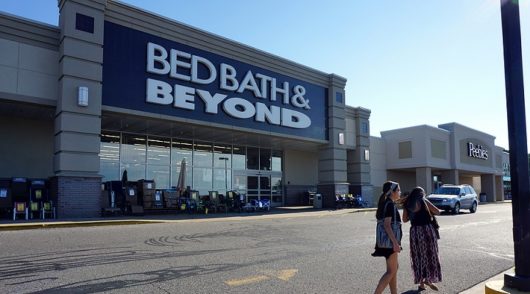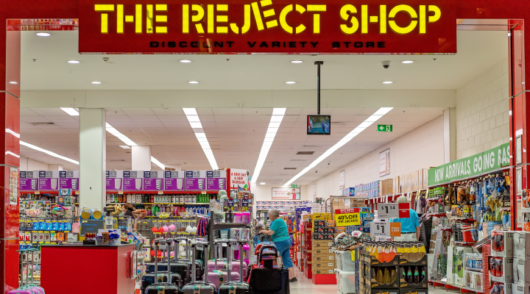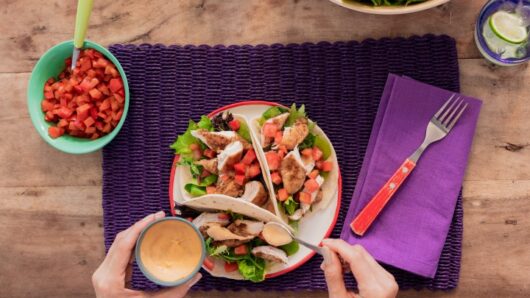
The retail industry is notorious for its thin margins, but every so often a trend comes along that is so universally appealing, the profit seems to take care of itself. And everyone starts looking for a way to cash in.
You might say that is what is happening with sneaker culture today. Case in point: A pair of original Nike racing flats from 1972 recently sold at auction for US$437,500 ($650,200) – a price that presumably includes a very healthy mark-up.
To be fair, the shoes are as much a historical artefact as they are a jewel in the crown of any avowed sneakerhead’s collection. Dubbed the Nike “Moon Shoe”, the handmade racing flats were designed by the brand’s co-founder and legendary US track coach Bill Bowerman, and are one of only a handful of pairs of known to exist.
But still, the record-setting sale suggests an unprecedented level of demand for sneakers and streetwear. According to industry intelligence company ReportBuyer, the global sneaker market stood at an estimated US$58 billion ($86.2 billion) in 2018 and is projected to reach US$88 billion ($130.8 billion) by 2024.
What was once a niche subculture, populated mostly by skaters, surfers, basketball players (and wannabe-players) and the odd collector, has morphed into a much larger and more diverse group of consumers spanning multiple generations and backgrounds.
It’s ruthlessly competitive
This shift can be attributed to a few converging factors in the retail sector, including the increased focus on direct-to-consumer sales at major sportswear brands like Nike and Adidas, the rise of influencers on social media and even the casualisation of the workplace – stylish sneakers are now acceptable in most offices.
But if you had to put it down to one word, it would be ‘hype’, according to Simon “Woody” Wood, editor of the Melbourne-based Sneaker Freaker publication.
Referring to Yeezy, Adidas’ ultra-popular shoe range designed in collaboration with Kanye West, Wood says, “There are kids who buy [Yeezy] without knowing anything about his music, and kids who buy them only because of his music. His ability to create hype is unparalleled.”
Collaborations are a frequent occurrence in the broader retail industry, of course, but they are virtually ubiquitous in the sneaker world, where brands work with celebrities, influencers and even other brands to create hype and reach new customers.
Adidas recently worked with iced tea brand AriZona on a pair of 99-cent sneakers, causing a near-riot at one store in New York City, while boutique brand Greats has teamed up with the hit HBO show Billions on a themed range.
“It’s just an incredible ecosystem of content and product and commerce,” Wood tells Inside Retail Weekly.
But it’s not necessarily a free-for-all.
“A lot of kids are pretty sharp. You can’t sell them something where the message is off,” he says.
This presents a potential stumbling block as new players look to tap into the increasingly competitive sneaker market.
While major sportswear brands continue to dominate the market (Nike’s Air Jordan and Adidas’ Yeezy shoes are reliably among the top-selling sneakers each year), luxury fashion houses like Balenciaga and Louis Vuitton have started releasing high-end sneakers in recent years, and new boutique brands are cropping up all the time.
Even mid-market retailers like Accent Group are looking to boost their street cred. The footwear company acquired premium sneaker boutique Subtype in 2018.
“The Australian market is really competitive now,” Wood says.
“When I started Sneaker Freaker in 2003, there was Foot Locker and almost nothing else. Now we have international companies coming across, and it’s ruthlessly competitive. These guys are competing for big money.”
The Iconic is the most recent retailer to jump into the fray. The online marketplace officially launched its new premium sneaker and streetwear vertical, Sneakerhub, at an event in Melbourne last Saturday. The event, which Sneaker Freaker helped coordinate, included an augmented reality experience, where guests could learn about the design stores behind iconic sneakers, and a ‘sneaker train’ from Reebok, where instead of sushi, shoes snaked their way around the room.
“We just love their attitude; they’re just going for it,” Wood says about The Iconic.
“There’s no doubt, with the brands they’re assembling, it’s going to be huge for Australian kids,” he says.
Sneakerhub offers a range of local and international brands, such as White Mountaineering, Norse Projects, Wood Wood, Soulland, Reigning Champ, Adidas, Nike, Puma and New Balance.
We’re all here for the same reason
Another challenge players in the sneaker world face is that they’re not only competing with specialty footwear retailers and brands selling direct-to-consumer, they’re also competing with consumers themselves.
One of the quirks of this culture is the significant size of the resale market. Cowen, a US investment firm, estimates the North American sneaker and streetwear resale market alone will reach US$6 billion ($8.9 billion) by 2025.
Saskia Fairfull, brand experience consultant and CMO of the Independent Fashion Advisory Board, tells Inside Retail Weekly that major industry events, like Complex Con and Sneaker Con, are filled with attendees scooping up styles to flip for a profit down the track.
“You go there and it’s full of 16-year-old dudes. They know everything about Air Jordans and Yeezys. They know the colourways, they know the celebrities behind the collaborations and they’re well aware of the potential resale price,” Fairfull says.
Platforms like StockX, a US company that originated as a price tracker for sneaker sellers on eBay and is now valued at US$1 billion ($1.5 billion), have made it easier for buyers and sellers to find each other, while offline ‘swap’ events organised by the likes of Sneaker Freaker regularly draw thousands of participants.
“There’s a whole community factor to this,” Fairfull says about the way sneaker aficionados connect.
“This is their tribe, where they feel they belong. There’s an element of, ‘we’re all here for the same reason – because we love this stuff’.”





